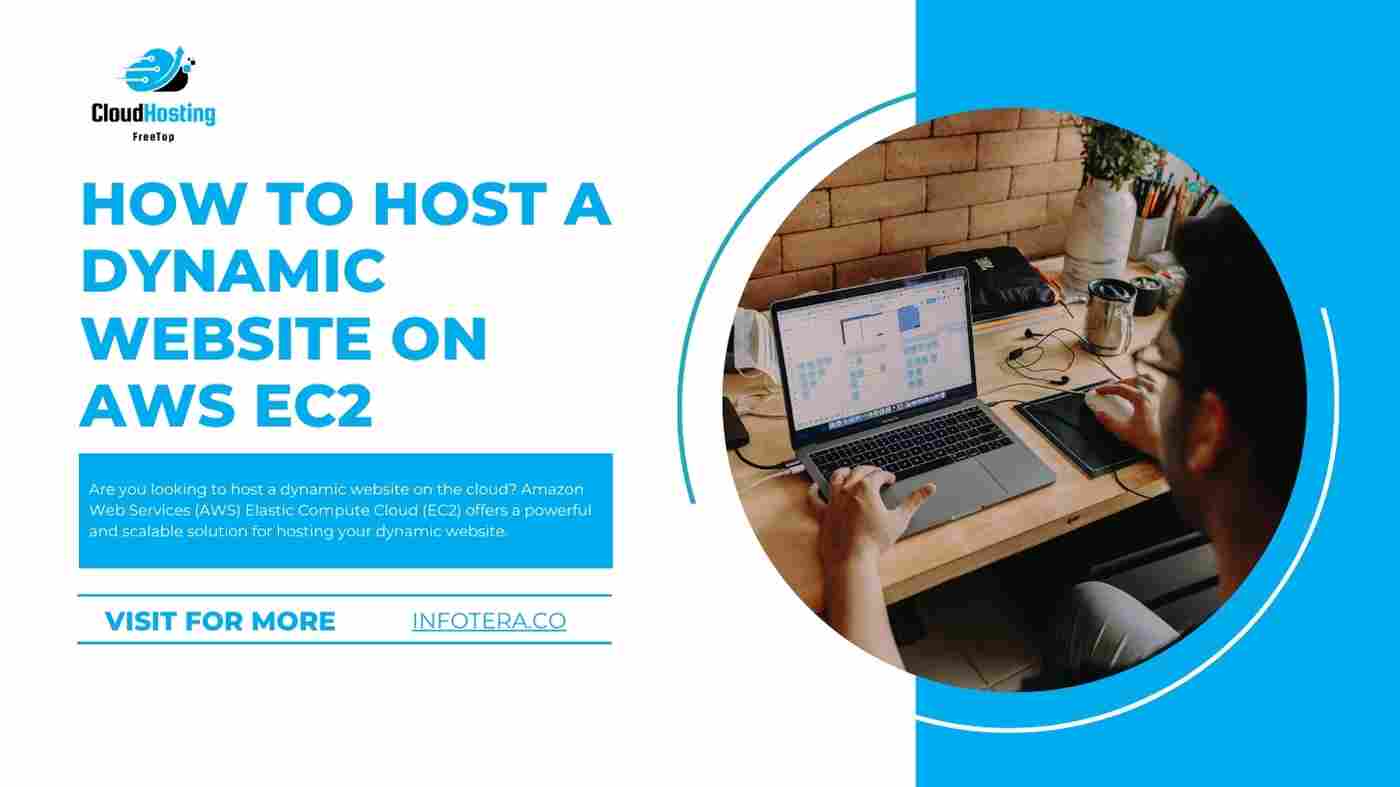Are you looking to host a dynamic website on the cloud? Amazon Web Services (AWS) Elastic Compute Cloud (EC2) offers a powerful and scalable solution for hosting your dynamic website.
With AWS EC2, you can easily provision virtual servers and configure them to meet the specific requirements of your website.
In this article, we will guide you through the process of hosting a dynamic website on AWS EC2, from setting up an instance to deploying your website and managing its scalability.
Introduction
In today’s digital age, dynamic websites have become increasingly popular due to their interactive and personalized content. Unlike static websites, dynamic websites generate content dynamically in response to user interactions, making them more engaging and user-friendly.
To host such websites, it is crucial to choose a reliable and scalable hosting platform that can handle varying traffic loads and provide seamless performance. AWS EC2 fits the bill perfectly, offering flexibility, scalability, and robust infrastructure for hosting dynamic websites.
Understanding Dynamic Websites
Before we dive into the process of hosting a dynamic website on AWS EC2, let’s first understand what dynamic websites are.
A dynamic website is built using server-side technologies such as PHP, Python, or Ruby on Rails, which interact with databases to retrieve and manipulate data.
This allows dynamic websites to display content that is tailored to individual users, such as personalized recommendations, user-specific information, and real-time updates.
Benefits of Hosting a Dynamic Website on AWS EC2
AWS EC2 provides numerous benefits for hosting dynamic websites. Here are some key advantages:
- Scalability: EC2 allows you to easily scale your website to handle increasing traffic. You can add or remove instances as per demand, ensuring optimal performance during peak periods.
- Flexibility: EC2 offers a wide range of instance types and configurations to cater to different website requirements. You can choose the appropriate instance size, CPU, memory, and storage capacity to meet your website’s specific needs.
- Reliability: AWS EC2 ensures high availability by automatically redistributing traffic and replacing instances in case of failures. This minimizes downtime and ensures your website remains accessible to users.
- Security: EC2 provides robust security features, including network firewalls, encryption, and identity and access management (IAM) controls. You can implement security measures to protect your website and user data.
- Cost-Effectiveness: AWS offers a pay-as-you-go pricing model, allowing you to pay only for the resources you use. This makes EC2 a cost-effective solution for hosting dynamic websites.
Now that we have a clear understanding of dynamic websites and the benefits of using AWS EC2, let’s proceed with the step-by-step guide to host your dynamic website.
Setting up an AWS EC2 Instance
To host your dynamic website on AWS EC2, you need to follow these steps:
Step 1: Creating an AWS Account
To get started, visit the AWS website and create an AWS account. Provide the required information and follow the on-screen instructions to set up your account.
Step 2: Launching an EC2 Instance
Once you have an AWS account, log in to the AWS Management Console. Navigate to the EC2 service and click on “Launch Instance.” This will launch the EC2 instance wizard.
Step 3: Choosing the Right Instance Type
In the instance wizard, you can choose the instance type that suits your website’s requirements. Consider factors such as CPU, memory, storage, and network performance when selecting the instance type.
Step 4: Configuring Security Groups
Security groups act as virtual firewalls for your EC2 instances. Configure the inbound and outbound rules to allow the necessary traffic for your website.
Step 5: Setting up Key Pairs for Secure Access
Key pairs provide secure access to your EC2 instances. Create a new key pair or use an existing one to securely connect to your instance via SSH.
Step 6: Connecting to the EC2 Instance
After launching the instance, connect to it using SSH. Use the key pair you created to establish a secure connection with your EC2 instance.
Installing Web Server Software
The next step is to install web server software on your EC2 instance. The most commonly used web server software for hosting dynamic websites is Apache. Here’s how you can install Apache on your EC2 instance:
Step 1: Choosing a Web Server Software
While Apache is the popular choice, you can explore other options depending on your specific requirements. Consider factors such as compatibility, performance, and community support when selecting a web server software.
Step 2: Installing Apache Web Server
To install Apache, connect to your EC2 instance and execute the necessary commands to install Apache web server software. Follow the documentation provided by AWS to ensure a smooth installation process.
Step 3: Configuring Apache for Dynamic Websites
After installing Apache, configure it to work seamlessly with your dynamic website. This may involve setting up virtual hosts, configuring modules, and enabling necessary extensions to support your website’s functionality.
Deploying the Dynamic Website
Once you have set up the web server software, it’s time to deploy your dynamic website on the EC2 instance. Here’s how you can proceed:
Step 1: Transferring Website Files to the EC2 Instance
Using secure file transfer methods, transfer your website files to the EC2 instance. You can use tools like Secure Copy (SCP) or File Transfer Protocol (FTP) to upload your website files.
Step 2: Configuring Database Services
For dynamic websites, databases play a crucial role in storing and retrieving data. Set up the necessary database services on AWS, such as Amazon RDS, to host your website’s database.
Step 3: Establishing Database Connectivity
Configure your dynamic website to establish a connection with the database hosted on AWS. Update your website’s configuration files with the necessary database connection details.
Step 4: Testing the Website
Once the files and database are in place, test your dynamic website to ensure everything is functioning correctly. Perform thorough testing of various features and functionalities to ensure a seamless user experience.
Scaling and Managing the Dynamic Website
As your dynamic website gains traction and attracts more users, it’s crucial to manage its scalability and ensure optimal performance. AWS EC2 offers several features for scaling and managing your website:
Step 1: Auto Scaling for Increased Traffic
Configure auto scaling groups to automatically adjust the number of instances based on traffic patterns. This ensures that your website can handle increased traffic without any performance issues.
Step 2: Load Balancing for High Availability
Implement a load balancer to distribute incoming traffic across multiple EC2 instances. Load balancing improves your website’s availability and helps distribute the workload evenly.
Step 3: Monitoring and Managing EC2 Instances
Utilize AWS CloudWatch or other monitoring tools to keep track of your EC2 instances’ performance. Set up alerts and monitoring metrics to proactively identify and resolve any issues.
Conclusion
Hosting a dynamic website on AWS EC2 provides you with a scalable, reliable, and cost-effective solution.
By following the step-by-step guide outlined in this article, you can successfully set up and deploy your dynamic website on AWS EC2.
Leverage the flexibility and scalability of AWS EC2 to ensure optimal performance and a seamless user experience.
FAQs
- Can I host multiple dynamic websites on a single EC2 instance?
- Yes, you can host multiple dynamic websites on a single EC2 instance by configuring virtual hosts and utilizing domain name mapping.
- Is it necessary to use AWS EC2 for hosting a dynamic website?
- No, there are other hosting options available, but AWS EC2 offers scalability, reliability, and a robust infrastructure that are well-suited for hosting dynamic websites.
- How can I secure my dynamic website on AWS EC2?
- You can secure your dynamic website on AWS EC2 by implementing security groups, using SSL certificates, regularly updating software, and following AWS security best practices.
- Can I use a different web server software instead of Apache?
- Yes, you can choose other web server software such as Nginx or Microsoft IIS, depending on your website’s requirements and compatibility.
- Is AWS EC2 cost-effective for hosting dynamic websites?
- AWS EC2 offers a pay-as-you-go pricing model, allowing you to optimize costs by scaling resources based on demand. Proper resource management and cost optimization techniques can make AWS EC2 a cost-effective solution for hosting dynamic websites.

